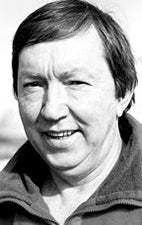The beauty of fall wildflowers
Published 12:00 am Thursday, January 1, 1970
Don’t tell Sarah Culbreth, Jeff Enge or David Enge I said this, but, if you are a wildflower lover, it’s well worth a long drive to visit their place of business, Tater Knob Pottery, this time of year, even if you don’t set foot inside the place.
Madison County’s Red Lick Road, off 421 about four miles southeast of Berea, which you have to traverse on the way to Tater Knob could more appropriately be called Goldenrod Boulevard or Wild Sunflower Way, from September through early October. Every shade of yellow under the sun is represented by one flower or another.
Kentucky has more than 30 species of goldenrod and more than half a dozen different wild sunflowers that are predominately responsible for the yellow paint job. But if you slow down and look close enough you will also find Jerusalem artichoke, sneezeweed, golden aster, brown eyed Susan, prairie dock and several other yellow wildflowers.
Identifying the exact species is a lot of fun to me but it can be very challenging, even if you have a good field guide. I mostly use a book entitled Wildflowers and Ferns of Kentucky by Thomas G. Barnes and S. Wilson Francis published by University of Kentucky Press. We have three or four other wildflower field guides somewhere in the house but I keep this one handy because it has the species separated by primary color and the seasons during which they bloom. It also has a stunning photograph of my all time favorite wildflower, a yellow lady slipper orchid, on the cover.
Of course yellow is not the only color you’ll see on the landscape in September. There are intermittent fields that will appear to be deep purple with ironweed in full bloom. Another field may look almost snow white or lavender with some species of wild asters. Ditch lines along the side of the road may form long lines of bright orange jewel weed. How jewel weed, sneezeweed and ironweed got “weed” attached to their names will forever be a mystery to me because they are anything but.
As you pull into the parking lot at Tater Knob Pottery, look up the hill to your left and you will see the finest patch of Queen of The Meadow that I’ve seen in several years. You may know this 10-foot tall beauty as Joe Pye Weed but I was in college before I ever heard anyone refer to its royal majesty as a “weed.”
But Joe Pye is simply the doorman to one of the most eclectic combinations of wildflowers and domestic flowers you’re ever apt to see in a home garden. Sarah Culbreth somehow manages to take enough time away from her pottery wheel to wash the red clay off her thumbs and let them be green for however long it takes to keep the flower garden ultra vibrant. She has several dozen varieties ranging from vivid reds and yellows to every color in between. Who, besides Sarah, would have thought that bright orange jewel weed blossoms and deep purple cock’s comb celosia would complement each other so well? Ditto for trumpet vine and a deep purple species that my buddy, Lynn Embaugh, calls Magic Bean. The lavender blossoms of this vine are very similar to hyacinth beans. Sarah had a different name for them but Lynn calls them “Magic” and I tend to agree.
I dare not try to list everything Sarah has growing because it would require all the space your newspaper allots this column. Go see it for yourself, then go inside and watch the potters magically turning mud into amazing art that has practical utility. And, hey, it’s not that long till Christmas.
In the meantime, you don’t have to go to Tater Knob to enjoy the season’s stunning display of wildflowers. Almost every rural road in the state is decorated right now. I would love it if someone could explain to me how grass leaf goldenrod got its name and why it is not called yellow ironweed. It sure looks a lot more like ironweed than it does to all the other goldenrods.
Find a one lane side road where you can drive slowly without getting honked at; one with some wide spots where you can get out and smell the flowers but use a tad of caution. If you take a deep, close sniff of that yellow flower growing on a 2-foot tall plant you thought was a different kind of sunflower, you may realize that you have just encountered sneeze weed.
Reach longtime Enterprise columnist Ike Adams at ikeadams@aol.com or on Facebook or 249 Charlie Brown Road, Paint Lick, KY 40461.






